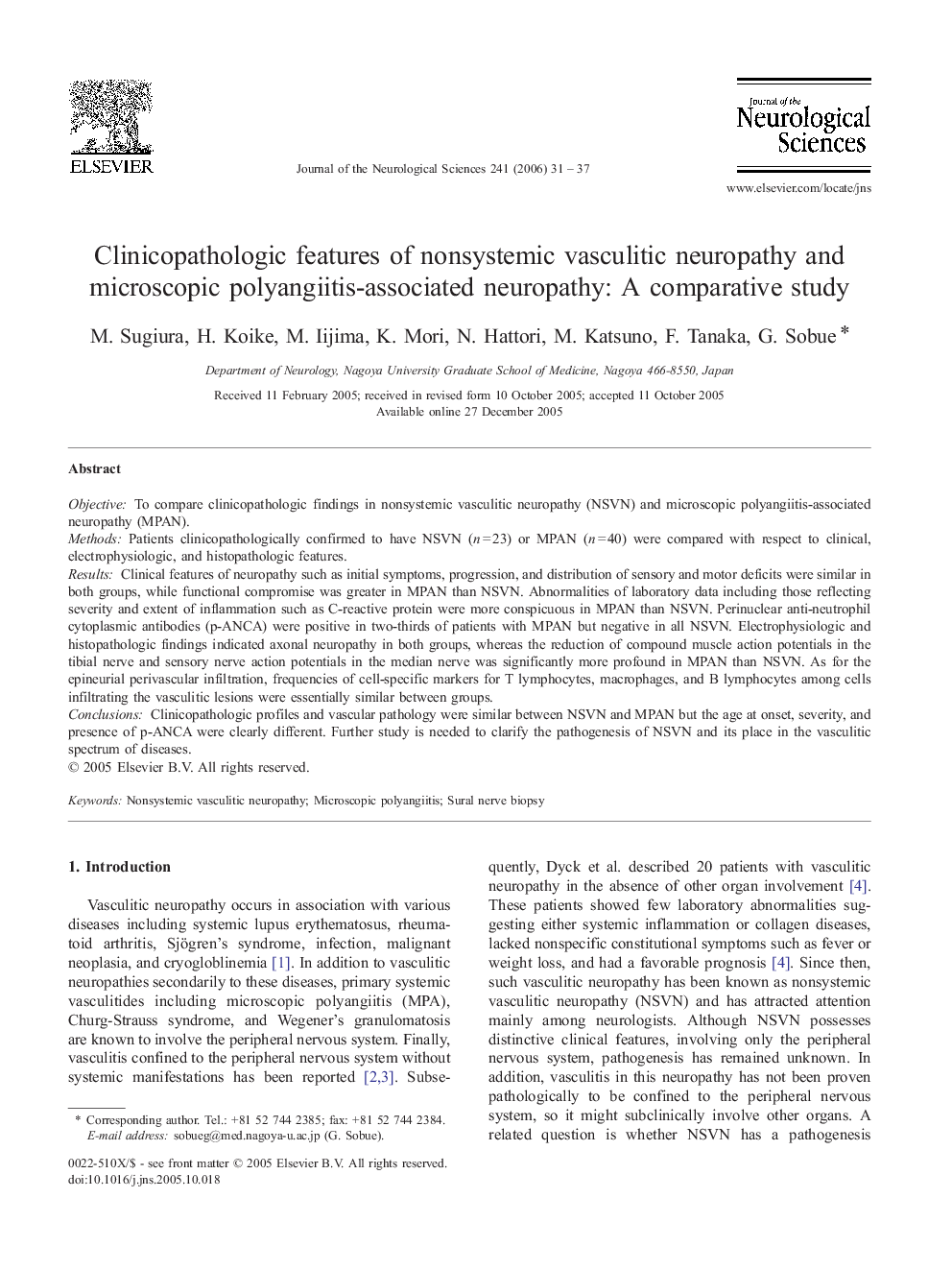| Article ID | Journal | Published Year | Pages | File Type |
|---|---|---|---|---|
| 1916654 | Journal of the Neurological Sciences | 2006 | 7 Pages |
ObjectiveTo compare clinicopathologic findings in nonsystemic vasculitic neuropathy (NSVN) and microscopic polyangiitis-associated neuropathy (MPAN).MethodsPatients clinicopathologically confirmed to have NSVN (n = 23) or MPAN (n = 40) were compared with respect to clinical, electrophysiologic, and histopathologic features.ResultsClinical features of neuropathy such as initial symptoms, progression, and distribution of sensory and motor deficits were similar in both groups, while functional compromise was greater in MPAN than NSVN. Abnormalities of laboratory data including those reflecting severity and extent of inflammation such as C-reactive protein were more conspicuous in MPAN than NSVN. Perinuclear anti-neutrophil cytoplasmic antibodies (p-ANCA) were positive in two-thirds of patients with MPAN but negative in all NSVN. Electrophysiologic and histopathologic findings indicated axonal neuropathy in both groups, whereas the reduction of compound muscle action potentials in the tibial nerve and sensory nerve action potentials in the median nerve was significantly more profound in MPAN than NSVN. As for the epineurial perivascular infiltration, frequencies of cell-specific markers for T lymphocytes, macrophages, and B lymphocytes among cells infiltrating the vasculitic lesions were essentially similar between groups.ConclusionsClinicopathologic profiles and vascular pathology were similar between NSVN and MPAN but the age at onset, severity, and presence of p-ANCA were clearly different. Further study is needed to clarify the pathogenesis of NSVN and its place in the vasculitic spectrum of diseases.
